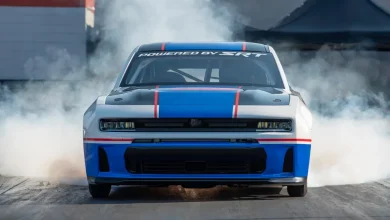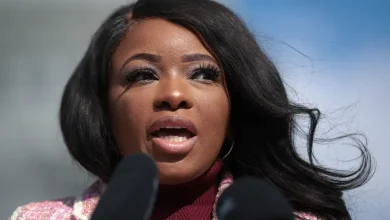How did Clark Lea take Vanderbilt from doormat to dominant? Start with Sunday school

Vanderbilt football’s rise-from-the-ashes revival was born in a Sunday school classroom inside a 131-year-old church on Broadway when Clark Lea was in sixth or seventh grade.
Christ Church Cathedral, a Diego Pavia Hail Mary away from FirstBank Stadium, is where the Commodores’ fifth-year football coach met a boy named Barton Simmons.
A boy who grew to become a close friend, confidant and teammate of Lea’s at Montgomery Bell Academy.
A boy Lea hired going on five years ago to be the Robin to his Batman, to be his program’s general manager.
The two have become closer than two coats of paint since that day they met in that Sunday school classroom. A long-ago trip to Krystal on their way home from a Nashville Sounds game captured their relationship in a nutshell, and showed Simmons what kind of person Lea is.
“So Clark and his dad each order a Krystal or whatever, and I order a deluxe chicken sandwich,” said Simmons, who played football for Yale, where he was a two-time All-Ivy League safety. “You would have thought it was the most pretentious thing anyone has ever done in the history of food orders.
“I caught a lot of grief for that. In some ways, that’s representative of Clark. He’s like this paradox of a very educated, professional, smart and sophisticated person who has, at his core, this blue-collar, chip-on-his-shoulder kind of mindset. He’s a gritty dude at his core. He’s also a poet at his core.”
The Edgar Allen Poe of SEC football coaches.
But how? How did Lea and Barton manage to make Vanderbilt football relevant?
Start with failure.
‘We had to get support unlocked’
Lea and Simmons had long longed to work together. But Lea was a coach. Simmons was 247Sports’ director of scouting and a CBS Sports’ college football writer.
Then a lightbulb illuminated in Lea’s head.
He knew the game of college football was changing. He knew that Name, Image and Likeness, a term for the compensation college athletes can earn from their personal brand, was in its infant stages. He knew new Vanderbilt athletic director Candice Story Lee had his back.
“I have a partner down the hall, not a judge,” Lea told The Tennessean. “She understood better than I did how sick this program had become and how far it needed to go before it was going to be competitive.”
So he began hinting to Simmons that he may have a job for him. A job that entails “shepherding and shaping” the program’s roster. That involves scouting and recruiting and collaborating to help “build consensus” among coaches.
Lea’s master plan, though, experienced humble beginnings. The team was 9-27 during his first three years, including a pair of 2-10 seasons.
“The initial model we tried to live in was kind of the only option on the table,” Simmons said. “You know, recruit sort of upside projections and retain and develop them. For a number of reasons, that got blown up.”
NIL was the detonator.
NIL gave the long dormant Commodores the option to adapt, pivot to a different approach. Level the playing field against their SEC competition.
“And we certainly needed the administration and the university to allow for that as well,” Simmons said. “We had to get that support unlocked.”
Enter Lee, who hired Lea after she was appointed the school’s AD in 2020.
‘It hasn’t fully come to fruition yet’
Lee made clear to chancellor Daniel Diermeier when she took the job that she wanted the university to invest in its athletic programs, something Vanderbilt hadn’t historically done much of.
Diermeier agreed. A revamped Vanderbilt football stadium and a revamped Vanderbilt football program are proof.
“We always knew that if we could do that, and if we figured out how to optimize our potential, we could compete with anyone,” Lee said. “He understood the opportunity that having a successful athletics program affords an institution.
“He said there was going to be no daylight between us, and he has stayed true to his word.”
Lee also sensed this journey of a thousand miles with Clark Lea and the football program would begin with some missteps.
And there were plenty.
Lea sat in his office into the early morning of Sept. 19, 2021. His team had just lost to Stanford. He wasn’t lost for ideas to fix things, though.
Simmons was right there with him.
They talked about their first recruiting class, how to leverage these losing experiences.
“How we create the narrative we want,” Lea said.
Just like that trip through the drive-through at Krystal, the two held each other accountable. Spoke harsh truths. And laughed some, too.
“Those conversations are so helpful to stay centered and to stay grounded, where you’re not just rolling around in the wake of emotions that came with the losing,” Lea said.
Lee believed.
“I’m proud of the fact that the way I feel about Clark today, while we’re ranked No. 10 in the country, is the same way I felt about him when we were 2-10,” Lee told The Tennessean. “We knew the vision was going to come to fruition. We also knew it was going to take time. And to be clear, it hasn’t fully come to fruition yet.”
So as Vanderbilt (6-1, 2-1 SEC) prepares to play Missouri (6-1, 2-1) on Oct. 25 (2:30 p.m. CT, ESPN), a week after Clark Lea topped LSU, and with ESPN’s “College GameDay” on campus for the game, Lee will continue to try to help push the program forward.
Lea will, too.
But none of this would be possible, of course, without the players.
‘They had all the insight’
Nobody wanted Diego Pavia, who is now the Vanderbilt captain and quarterback. He went from junior college to New Mexico State to Heisman Trophy candidate, and was doubted by most every step of the way.
Then there’s tight end Eli Stowers, Pavia’s pal and former teammate at New Mexico State. He helps keep Pavia grounded and is projected to be picked as early as the first round in the 2026 NFL Draft.
Lea and his staff’s ability to discover the hidden is a piece that completes the puzzle.
Lea’s decision to hire a lot of New Mexico State’s staff and bring in New Mexico State’s players provided proper punctuation to his plan.
“Those guys were a product of Clark’s ability to identify New Mexico State’s offense as the right offense to implement into this program,” Simmons said. “Clark’s willingness, Clark’s humility to go there and hire that staff … “
His thoughts fast-forwarded to Pavia.
“They had all the insight around Diego,” Simmons continued. “And Eli was already clear, a future pro. Those two were an easy answer. We had insider knowledge with those coaches.”
Now, the Commodores are on the inside track to the best season in program history.
And it all began in that Sunday school classroom just down the road.
Paul Skrbina is a sports enterprise reporter covering the Predators, Titans, Nashville SC, local colleges and local sports for The Tennessean. Reach him at pskrbina@tennessean.com and on the X platform (formerly known as Twitter) @paulskrbina.





